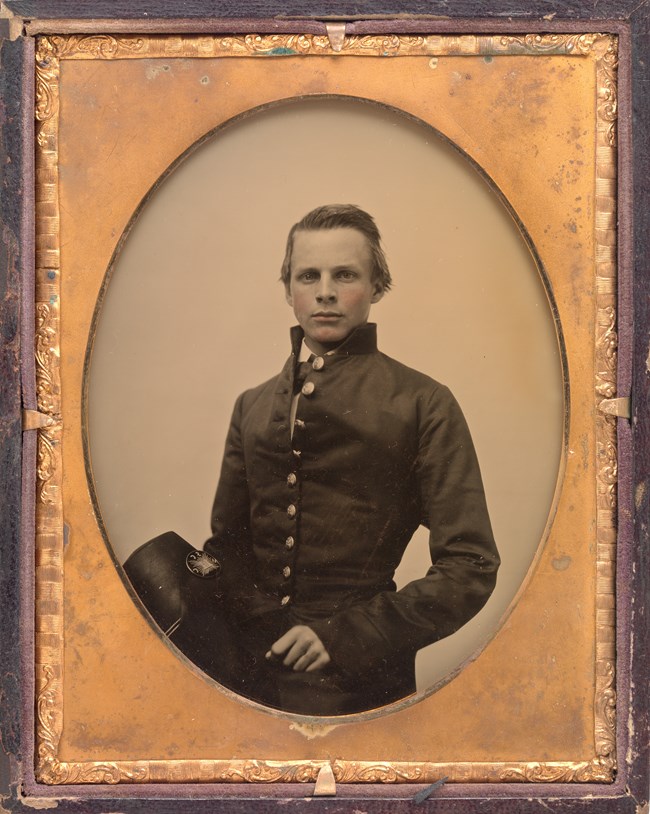Last updated: October 23, 2022
Article
John Pelham

National Portrait Gallery
Pelham considered leaving West Point in the months immediately after Alabama’s secession. However, Pelham was set to graduate in 1861 and did not want his time spent at the academy to be wasted. He wrote letters to family and friends asking for advice, writing, "Alabama seems determined to leave the Union…It seems pretty hard that I should toil for four and half years for a diploma and then have to leave without it." In those early months no one knew for certain whether the secession crisis would result in an armed conflict. For Pelham, leaving before a war was a certainty would risk his future career within the United States Army were the tensions to blow over. Pelham decided to wait.
In March of 1861 he was appointed to be a First Lieutenant for the Confederacy, an appointment he initially turned down. However, after the Confederate assault on Fort Sumter, West Point cadets were called upon to uphold their oaths to the army and the United States. Pelham refused. He resigned his commission, returned to the Alabama, and took a commission in the Confederate Army.
Pelham had a good reputation among his subordinates and superiors, but it was his actions at the Battle of Fredericksburg on December 13, 1862 that propelled him to celebrity status. As chief of J.E.B. Stuart's artillery, Pelham in command of only two guns, went in front of the Confederate line at Prospect Hill. Using the cover of fog and low country, Pelham positioned his guns on the left flank of the US Army of the Potomac. At 10am he opened fire on the line and continued firing into Federal ranks for an hour. One of the guns was quickly taken out of service, leaving Pelham and his men with just one gun. He skillfully maneuvered this gun to avoid returning fire from Federal artillery, and successfully delayed the Federal infantry attack on Prospect Hill. Confederates looking down at the action from the heights watched in awe and praised the efforts of the young artilleryman. General Robert E. Lee called him, “the gallant Pelham” and the moniker stuck.
The following spring, Pelham was mortally wounded at the Battle of Kelly's Ford. Confederates mourned Pelham’s loss and the young officer received a posthumous promotion to lieutenant colonel.
